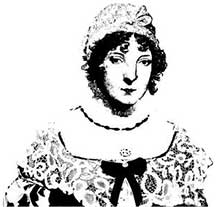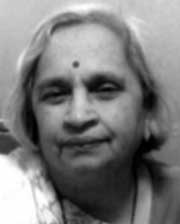Mamata Pandya
Bridge collapses at multiple locations across the country during the recent months have brought the focus on bridges. This may be an appropriate time to understand these bridges a little better. To go back in time and know about the early bridges and those who built them.
To discover that one of the first patents for a chain-suspended bridge in England was filed in 1811 by a woman! This was Sarah Guppy, an engineer, inventor, campaigner, designer, reformer, writer, environmentalist, and business woman, in a period when it was unthinkable that women could be anything except wives, homemakers, and mothers.

Sarah was born in 1770 to a wealthy merchant family of Birmingham. In 1795 Sarah married Samuel Guppy, a rich Bristol merchant, 15 years older to her, and settled into family life in Bristol. This was a period when the Industrial Revolution was shifting the largely agrarian economy of England towards mechanized manufacture.
As per the societal norms of the time, women were expected to keep house and raise children. While Sarah largely conformed to her role and went on to have six children, she was far from docile and dull. Sarah was exceptionally well-read, talented, and creative. She and her husband were part of the Bristol society and amongst their friends were Thomas Telford, a road and tunnel engineer, and the family of Isambard Kingdom Brunel. Brunel was one of the most versatile engineers of the 19th century, responsible for the design of tunnels, bridges, railway lines and ships. He is best remembered for his construction of a network of tunnels, bridges and viaducts for the Great Western Railway (GWR). Coming into contact with such people sparked Sarah’s interest in the science and craft of engineering, and triggered in her creative mind the desire to invent engineering solutions.

Sarah was an early advocate of a suspension bridge in Clifton – a project that had long been debated and discussed. She was engaged in preparing models of the bridge that could span the river Avon. Her idea was to work on a way of piling foundations to create a new type of suspension bridge, and she made drawings and plans for the same. Her son Thomas was GWR’s principal engineer, and she gave the design and plans for her bridge over the Avon to Brunel.
When her youngest daughter was just a year old, Sarah applied for a patent for a way of piling foundations to create a new type of suspension bridge. In March 1811, she obtained a patent for erecting and constructing bridges and rail-roads without arches or starlings, whereby the danger of being washed away by floods is avoided. What was noteworthy was that Sarah became the first woman ever to patent a bridge. Even more noteworthy was the fact that this was in a period when married women could not even own property in their name.
Sarah’s inventive mind did not stop at this. She developed a devise to prevent barnacles forming on boat hulls, and sold the contract to the British Navy. She also put forward a scheme to prevent soil erosion on railway embankments by planting willow and poplar trees. Even as she played her role as homemaker, she came up with innovations. She designed a bed that could also be used as a gymnasium with steps and bars for exercising; and a coffee urn whose steam could be used to boil an egg and at the same time keep the toast warm! She was even granted a patent for this in 1812. In all Sarah won 10 patents, a remarkable achievement in the late Georgian and early Victorian period.
Sarah was not just ahead of her times in her engineering prowess. She wrote and presented schemes for a wide range of issues including animal welfare, education, agriculture, and horticulture. She also wrote a book, ‘Instructive and Entertaining Dialogues for Children’ and founded a charity school for girls.

Bridging the span across continents, and across nearly a century, this is a good time to remember Shakuntala A. Bhagat – India’s first woman civil engineer. Shakuntala was born on 6 February 1933. Her father S.B. Joshi is regarded as the Father of Bridge Engineering in India. She was just 20 years old when she got her civil engineering degree from Virmata Jijabai Technological Institute and the first woman in India to get the degree. From 1954 to 1956 she went to West Germany and UK for practical training, and got her master’s degree in civil engineering from the University of Pennsylvania. She returned to India to join IIT Mumbai as assistant professor in 1960 and went on to become Head of the Heavy Structures Laboratory there.
Shakuntala was more than an academic. She pioneered many innovative structural designs, especially for bridges. She and her husband, Anirudha S Bhagat, designed and patented an innovative prefabricated modular system known today as the Quadricon Modular Bridge System. This is a series of prefabricated mass-produced modular bridge steel parts, small and lightweight enough to make transport easier for builders. They can be used in different types of bridges, different spans, traffic widths, and loads, by changing the combination of the assemblies.
Shakuntala was awarded the Woman Engineer of the Year Award in 1993. She passed away in 2012, a century after the first patent for a bridge was awarded to Sarah Guppy. She left behind a lasting legacy of over 200 Quadricon bridges around the world (including 69 in India) in terrains that challenge engineers even today.
In October 2016 the Government of India announced the launch of the Indian Bridge Management System, the largest platform in the world to collect information on bridges. This database would certainly be enriched by adding information on the pioneers who designed and built bridges.
The author worked at the Centre for Environment Education in Ahmedabad for over three decades, where she was engaged in instructional design for educators and children. She is now an independent consultant, editor, writer, translator, storyteller and blogger. She can be reached at mamata.pandya@gmail.com.
